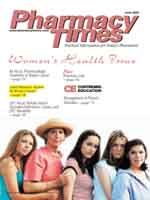Publication
Article
Pharmacy Times
Bar Coding: Leadership and Responsibility Are Needed
In the past several weeks, the Joint Commission on Accreditation of Healthcare Organizations has asked for comments from hospital officials regarding an intention to create standards for the use of bar codes in hospitals. Specifically, standards would require the use of bar codes in the drug-distribution and medication-administration processes to improve patient safety. The Institute of Medicare, the Leapfrog Group, and the National Patient Safety Foundation have endorsed the use of bar codes to validate systems and processes that link patients to specific treatments, tests, and procedures. It all makes good sense?scanning the patient's identification bracelet and then the drugs to be administered, laboratory tests to be performed, or presurgery preparation will undoubtedly increase accuracy. Regrettably, however, many challenges must be overcome before this vision becomes a complete and widespread reality.
It is difficult to understand why pharmaceutical manufacturers have not led this initiative. Abbott Laboratories (now joined by Hospira) and Eli Lilly & Company voluntarily made commitments to print bar codes on all their products prior to the recent FDA mandate. It will be interesting to watch other companies that manufacture single-dose products become compliant. My fear is that many may choose to eliminate the product lines that are currently available in single-use packages and decide to make even fewer unit products available in the future. I understand that they are confronted by challenges, but if grocery and large hardware stores, express mail carriers, and the travel industry can make bar coding work, shame on the pharmaceutical industry if it cannot. Patients and providers need the support of pharmaceutical manufacturers, if not their leadership. It would be even better if this technology could help minimize the drug-counterfeiting problems.
My hospital has begun a strategic-planning process for bar-code applications to support the many interested parties that plan to use the technology. Documents, meals, lab specimens, radiographs, medical/surgical products, and drugs all will eventually have bar codes. Many decisions must be made and implemented regarding preferred symbology, scanning devices, data imbedded in the bar codes, and interfaces with information systems. Now is the time for us as hospital pharmacists to actively participate in planning and implementation. We must make our plans to meet current and future needs so that we can enhance future applications without having to start from scratch sometime in the future.
Compromises will need to be made as many of the bar-code applications are considered, but we must remember 2 critical realities. The number of "scans" of doses administered far outnumbers and is a more valuable commodity than meals, equipment, and supplies. I contend that this application should then become the "majority stakeholder" for decision making, and other applications should conform to the requirements for the medication-administration process. We also must listen to and support our nursing colleagues who will ultimately use the technology more than any other providers, as scanners are chosen and procedures are planned.
Drug wholesalers and generic drug manufacturers that intend to sell single- unit packages should join hospital pharmacists and engage regulatory and legislative leaders as we try to make bedside bar coding a reality. We know that it is the right thing to do. Manufacturers can produce single-unit packages more efficiently and cost-effectively than repackagers or individual hospitals can.
It is time that we all accept responsibility for patient safety, including pharmaceutical manufacturers. Encourage your colleagues to let pharmaceutical manufacturers know that we need and expect their support, and make a commitment to patient safety.







